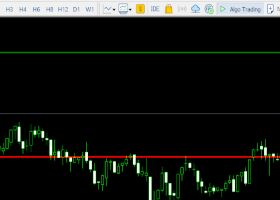Asia's Anesthesia Could Wear Off – Deutsche Bank
Mallika Sachdeva, Strategist at Deutsche Bank, suggests that three
forces – beyond positioning and seasonality – have been at play in the
latest Asian FX rebound but the numbing relief from each could wear off.
Key Quotes
“First, Fed pricing has
disconnected from easier financial conditions. The S&P rebound would
now be consistent with the market pricing over two hikes from the Fed
this year, instead we are pricing less than one. Over the past few days,
Fed pricing has begun to grind higher, putting a bid under the USD.
Admittedly, Yellen could reinforce a dovish message this week pouring
cold water on recent moves. But we doubt this would have the same
positive impact on Asian FX as in March with positioning much lighter.
While further extension of the dovish window could begin to embolden
Asian central banks which have been tentative about cutting rates
(Korea, Malaysia, Thailand).
Second, Asian data surprises have
bounced led by Chinese stimulus. However, Asia data surprises are
nearing cyclical peaks, and the stress in the Chinese credit/rates
market is shedding light on the poor quality of data improvement. The
best of the data bounce halo may be behind us. A longer-term picture
makes the same point. Asian FX has moved with cumulative data surprises
over long periods. Asian FX topped out in 2011 precisely when data began
missing expectations. Asian FX weakened beyond data disappointments
last year, but recent FX gains have corrected this gap. For currencies
to head higher, data would need to start sustainably surprising.
Third,
strength in the JPY, and stability in USD/CNY have been working
together to create a benign environment for Asian FX. We have
highlighted that this is a fragile balance, which renewed success in
weakening the JPY could upset. Note that USD/CNY fixed back above 6.50
today for the first time this month after a 2% move higher in USD/JPY on
Friday. While still at low levels, CNY is now the second most
correlated Asian currency with the JPY, after SGD.
Going into a
seasonally weak May, it will be a nervous week for Asian FX with markets
watching three policy responses: Fed’s response to the market-dot
divide, BoJ’s response to perceptions of narrower policy space, and
China’s response to this more default-driven (rather than
liquidity-driven) credit stress.”
![]()



